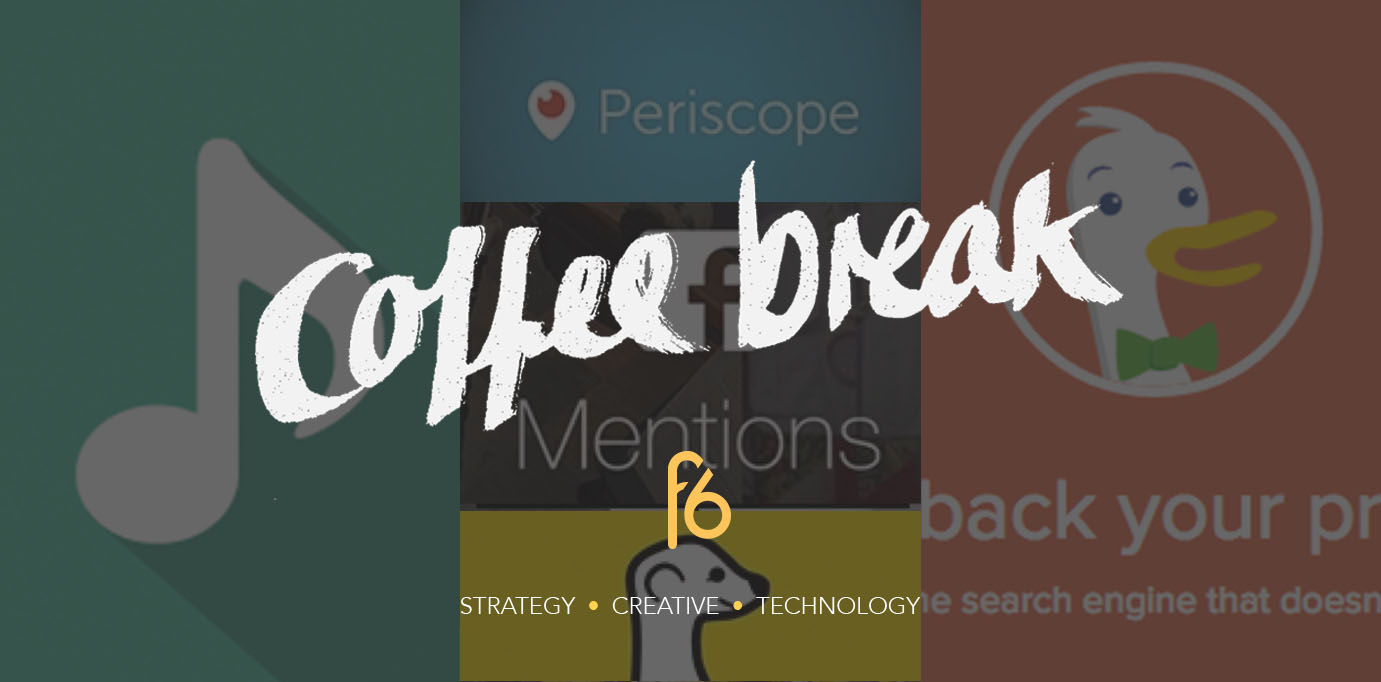Here’s our roundup of what we’ve been talking about this week, including DuckDuckGo’s growing popularity, new ways of engaging with your audience, and why your brand could benefit from an earworm.
Chris, Head of Digital
DuckDuckGo: The end of search engine tracking?
DuckDuckGo just reached 10 billion searches. It is a privacy search engine that does not track you or target you with ads. It is just plain and simple searching.
But, will it really ever rival Google?
Not for a while, at least. Google now processes over 40,000 search queries every second on average, which translates to over 3.5 billion searches per day and 1.2 trillion searches per year worldwide. However, with the world moving away from the traditional way of doing things, and the media awash with stories of data breaches and the importance of our online privacy, could they be onto something?
The fundamentals of DuckDuckGo align with the fact people are becoming tired of being profiled, tracked and told what they might like:
But with traditional online marketing relying heavily on tracking and user information, it’s yet to be seen how it could affect the way digital marketing works.
Candice, Managing Director
New year, new ways of engaging with your target audience
Marketing is constantly evolving. So if you want to create an impact and drive business this year, you need all the most updated tools and ways of engaging with your target audience.
Firstly, before you do anything, look at the basics. Is your brand consistent? No matter how big or small your business is, or whether you are a consumer focused or a B2B service provider, you will benefit from developing and maintaining a recognisable brand. Does your company website communicate what your core products or services are, or does it showcase what sets you apart from you competitors and what your unique selling points are? Is your message and positioning consistent and is this applied across everything that you do? It’s important to have an overview to make sure that the foundation of your business is right and then focus on finding new ways to engage with your customers.
Some new ways to consider engaging with your audience this year:
Live Streaming Videos
This is a good way to help boost engagement. Considering things like live mobile streaming apps which are great way to interact with your audience in real time. From live streaming events to showcasing your products or services, live streaming offers endless opportunities for connecting and engaging with your audience.
Augmented Reality
Thanks to Pokémon Go, augmented reality will start to drive more engagement as users are now ready for these virtual experiences. Bigger brands are starting to tap into the potential it has and are starting to capitalise on it.
Using your customer data for personalisation
I highlighted last week how beneficial it is to use your customer data to maximise your engagement with your customers. If you use the data wisely, you will add extra value to them and help to deliver your services more efficiently. Read more on “Using customer data for personalisation” here.
In the end, it’s important to try new things backed with a strategy and plan that works inline with the rest of your marketing efforts. You can then measure the results to see what worked well and what didn’t work so well.
Sian, Creative Strategist
Does your brand have an earworm?
In 2009, this sound was heard 20,0000 times a second:
https://www.youtube.com/watch?v=j7kLNJWTDYA
Today, 90% of people recognise this sound:
https://www.youtube.com/watch?v=AbTsEQmpDGM
Both of these are examples of earworms. They’re short sounds that worm their way into your brains and stay there. And many brands have successfully managed to leverage this idea of a combination of sounds lodging themselves in our collective consciousness to their advantage.
“bah dah bah bah baaaaah.”
You wouldn’t be alone if your brain just said “I’m lovin’ it”.
“EA Sports.”
Yep, there goes your brain with “It’s in the game”.
It’s clear that sound has as much of a seat at the branding table as the visual, and it’s shaping the way we go about making brand identities. Indeed, the 360 degree brand identity concept comes from the idea that branding is now much more than the ownership of a set of verbal and visual assets. Instead, we’re now dealing with the possibilities of crafting associative relationships with interactive assets (how things react when we touch them) and sensorial assets (taste, touch, and sonic).
Sonic branding can reinforce a brand identity as much as a logo, and can communicate on a similar level. It even deals with the same themes as visual branding.
I’ve written before about Apple’s skeuomorphic approach to their brand, a practice that they hoped would help users understand the idea of a digital interface when we were all still very much used to pressing a raised plastic button to make something work. They designed much of their visual interfaces by borrowing from our visual knowledge of things from the real world; make the notepad look like a real notepad, make users put something they want to delete into an image of a trashcan. Now we’re a bit more comfortable with the idea of a digital interface, these things seem a bit dated and patronising. So much so, that Apple has moved away from doing this—with the exception of sound.
Think about the sound when you drag something to the trash on a mac. Or when you type something on your iPhone. Throwing a file into the trash icon sounds like throwing paper into a bin. Typing sounds like a typewriter.
These sounds are all engineered to act as ownable triggers for brands, whether that’s to communicate a concept (Skype’s dial tone sounds like speech bubbles, while the basso error message sounds like you’re hitting a metaphorical wall), explain what you’re doing on a semiotic level (the iphone send and receive sounds act as a back and forth), or even just borrowing from the visual (the sound synonymous with T Mobile looks like their logo reversed). Even Intel’s bongs, sound like the rhythm of saying “Intel Inside”.
You can watch two experts on sonic branding, dissect the most famous brand sounds and why they work below:






